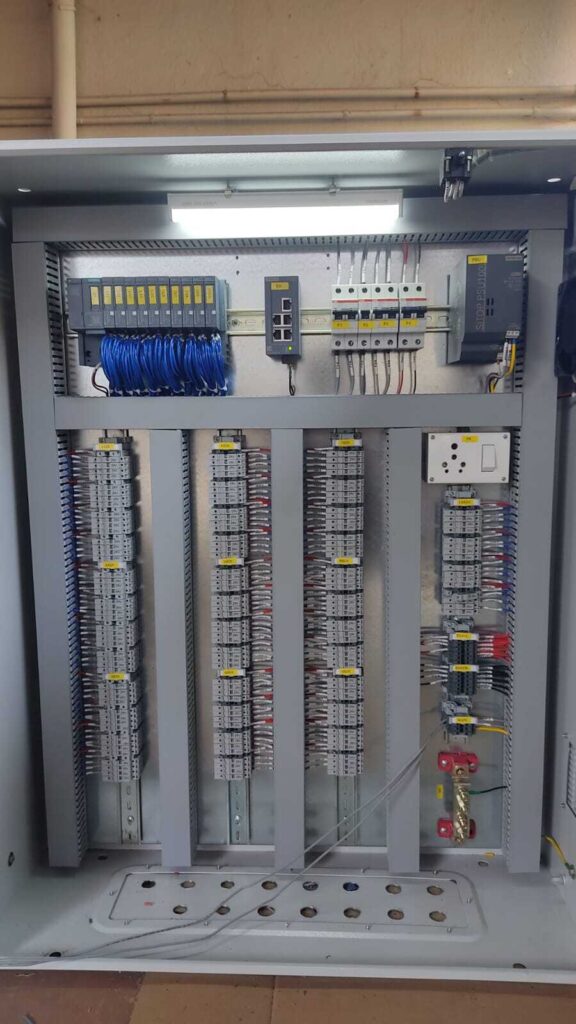Gallery
Kathiron Control System
( industrial electrical & automation Solution provider )
Table of Contents
MCC cum PLC SYSTEM
Advantages of MCC + PLC
Centralized motor protection & control.
Flexibility in automation (easy reprogramming).
Remote monitoring via HMI/SCADA.
Reduced downtime with fault diagnostics.
Energy efficiency when combined with VFDs.
Applications of MCC cum PLC Systems
Industrial Automation & Process Plants
Automating conveyors, pumps, mixers, compressors, and fans.
Controlling sequences, start/stop logic, and interlocks.
Water & Wastewater Treatment
Pump station control, level-based motor operations.
Backwash and dosing automation with safety interlocks.
Cement, Steel, and Mining Industries
Crusher, kiln, and conveyor motor control.
Sequential motor start-up to reduce inrush current.
Power Plants & Utilities
Boiler feed pumps, cooling towers, ash handling systems.
Load management and motor protection.
Food & Beverage, Paper, and Textile Industries
Automated production lines with synchronized motor operations.
Energy-efficient operation through PLC-controlled VFDs (Variable Frequency Drives).
Oil & Gas, Petrochemical & Refineries
Critical motor control for pumps, compressors, agitators.
Integration with SCADA/DCS for monitoring & redundancy.
HVAC & Building Automation
Chillers, cooling towers, ventilation systems.
Demand-based motor operations for energy saving.
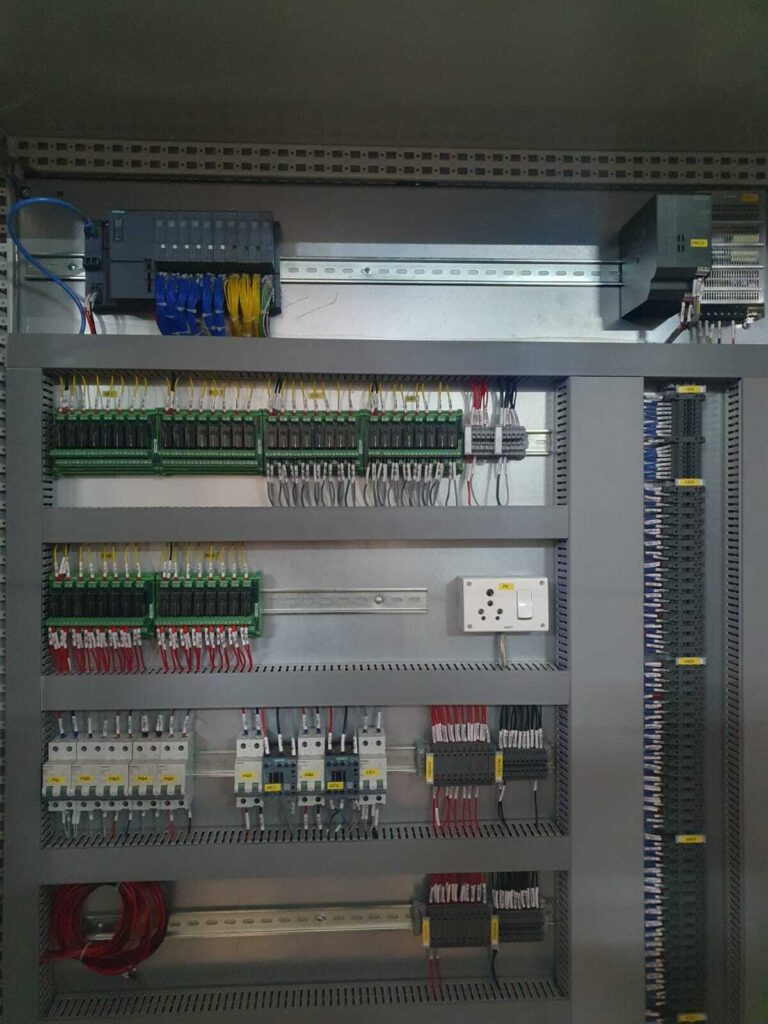
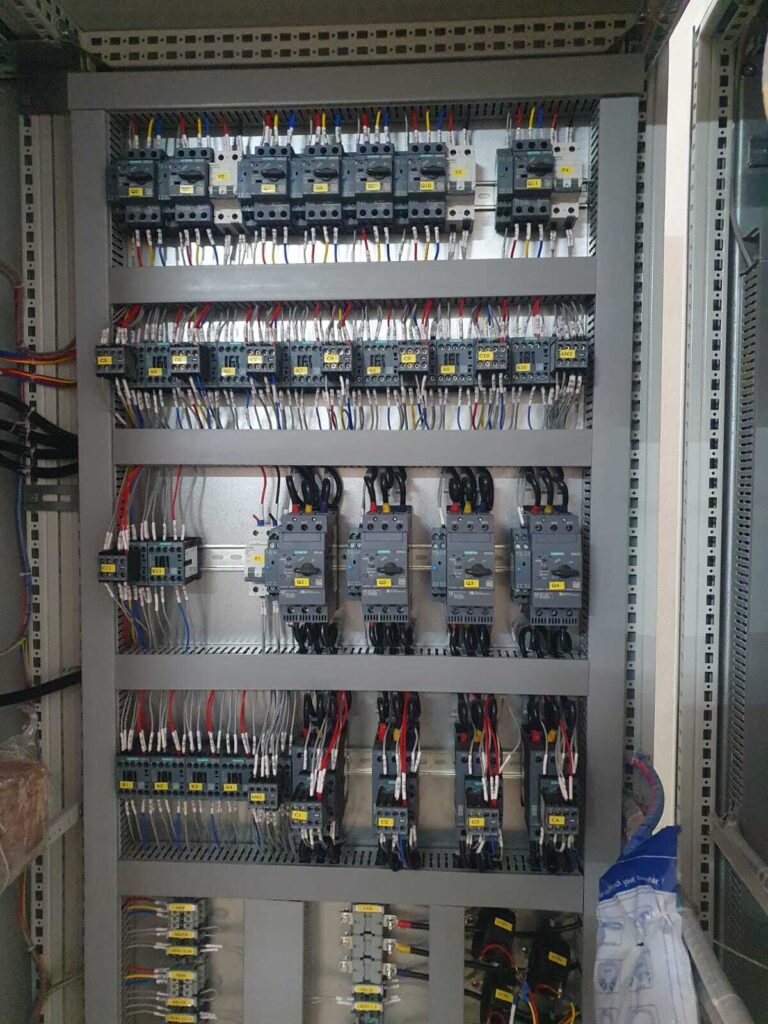
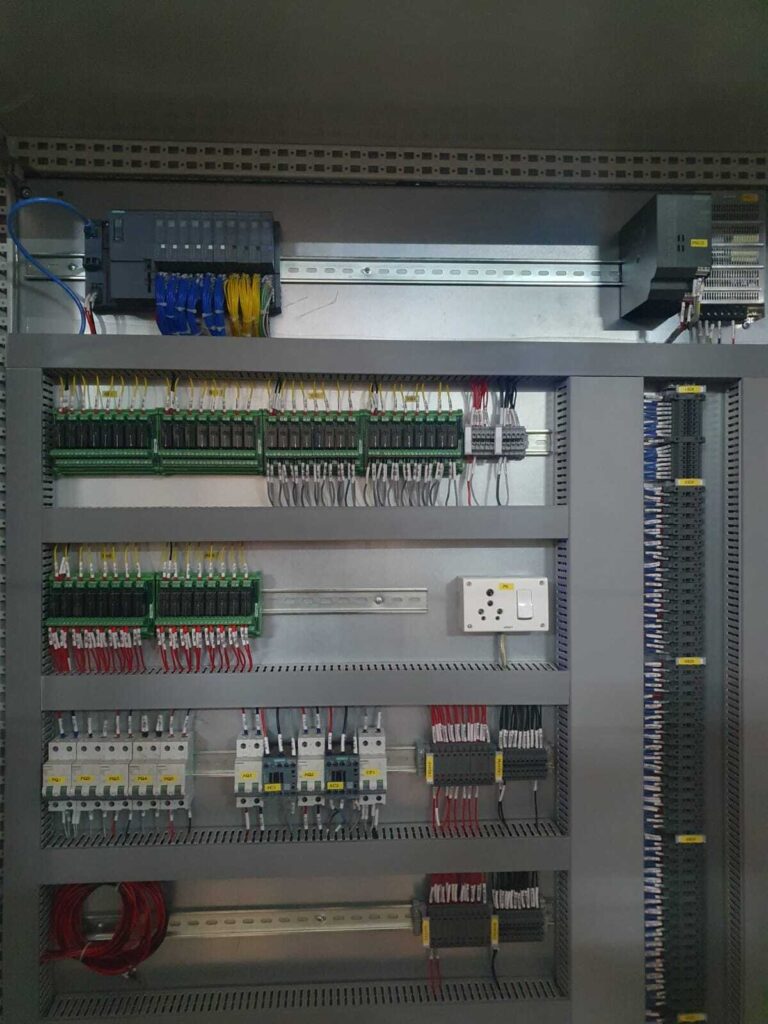
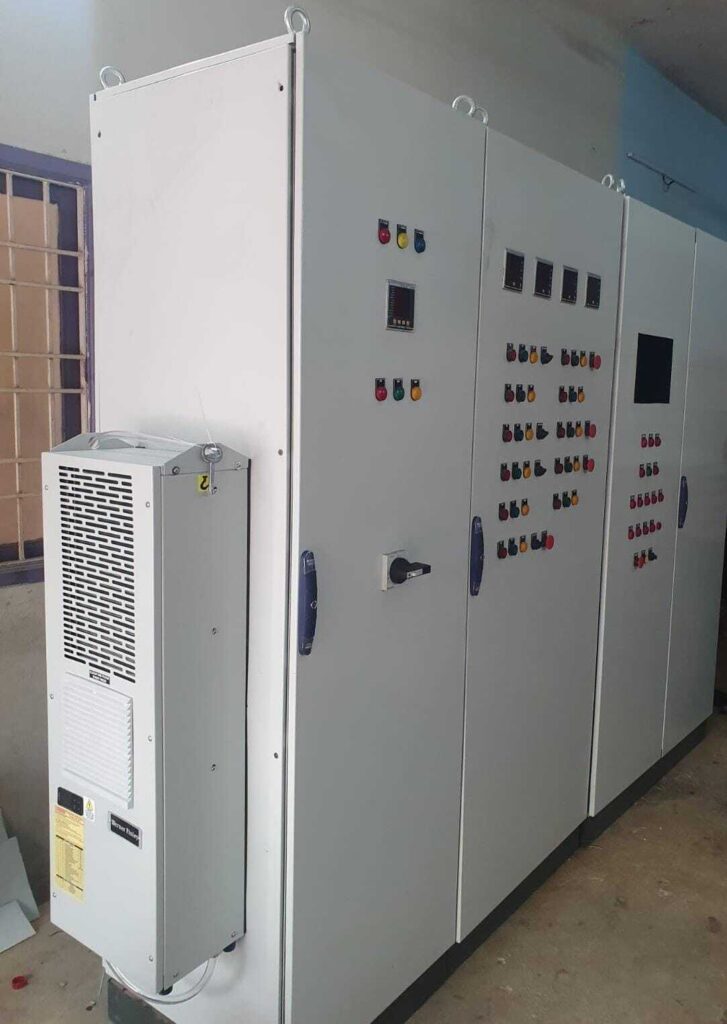
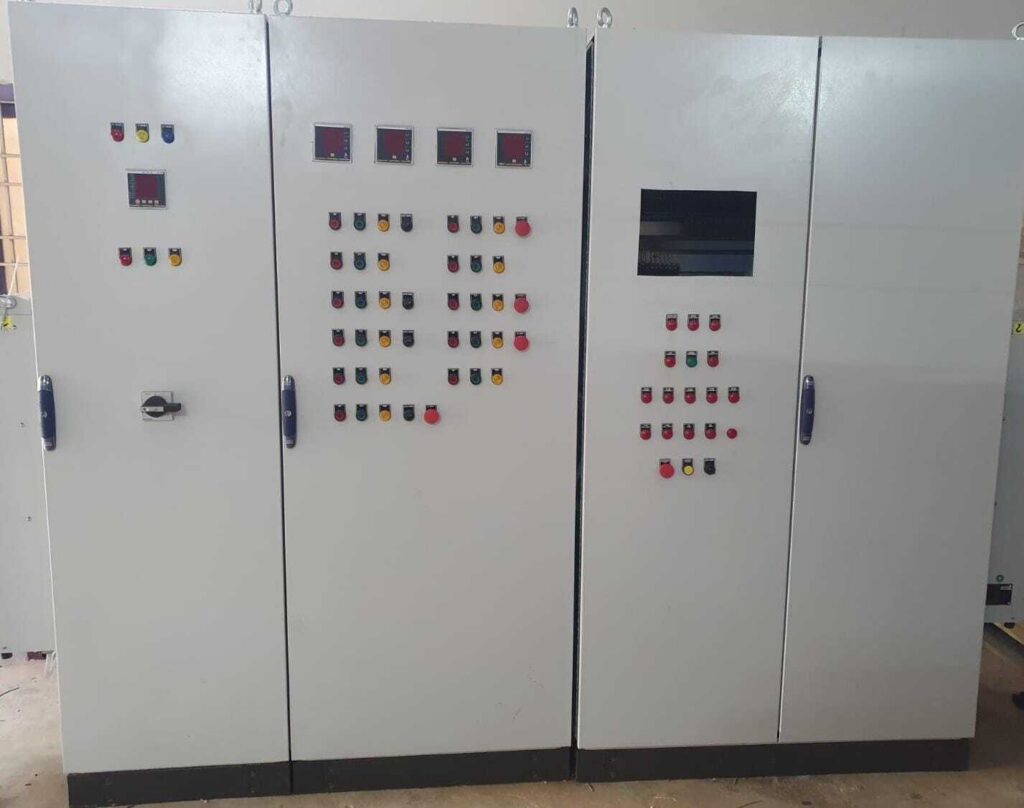
MCC cum VFD SYSTEM
Advantages of MCC + VFD
Energy savings by running motors at required speed instead of full load.
Reduced mechanical stress with soft starting/stopping.
Improved process control through precise speed/torque adjustment.
Lower maintenance cost due to reduced wear & tear.
Seamless integration with PLC/SCADA systems for automation.
Applications of MCC cum PLC Systems
Pumping Applications
Water supply, irrigation, and wastewater treatment.
Flow and pressure control, energy saving during low demand.
HVAC & Building Automation
Fans, blowers, and chillers in commercial/industrial complexes.
Variable airflow/temperature control for energy optimization.
Cement, Steel & Mining Industries
Crushers, conveyors, mills, kilns.
Smooth motor start/stop to reduce mechanical stress.
Power Plants & Utilities
Boiler feed pumps, induced draft (ID)/forced draft (FD) fans.
Speed regulation to match load demand.
Oil & Gas, Petrochemicals
Compressors, agitators, pumps.
Controlled startup and energy-efficient continuous operation.
Food, Beverage, and Textile Industries
Mixers, dryers, washing lines.
Process speed adjustments for different production stages.
Paper & Printing Industry
Continuous process lines requiring speed synchronization.
Reduced downtime through smooth motor control.
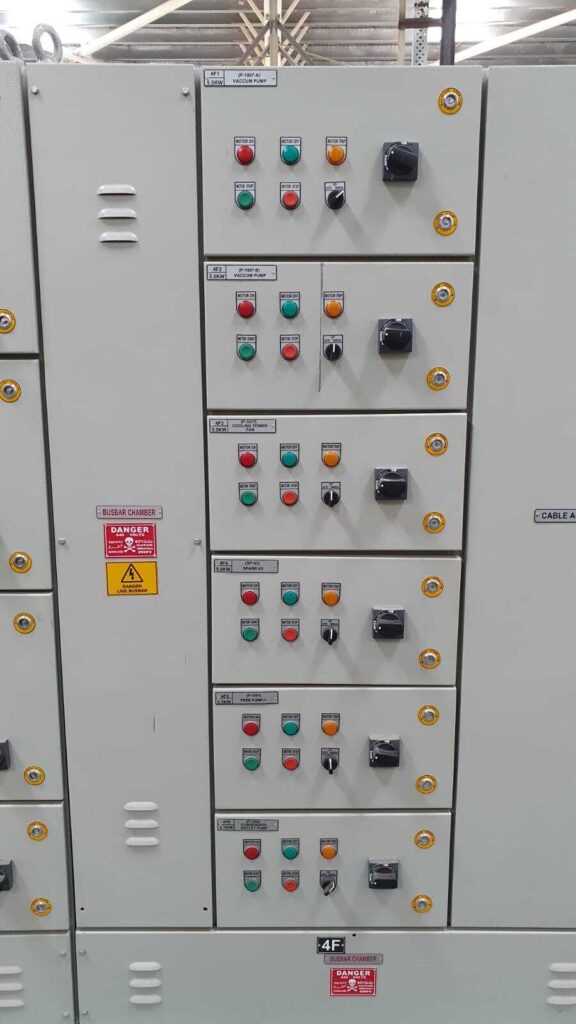
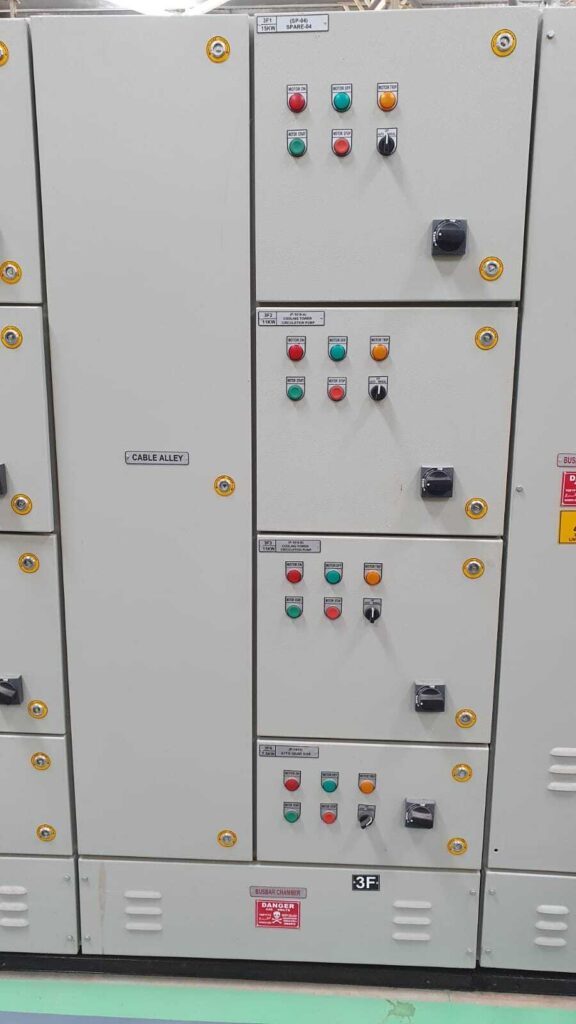
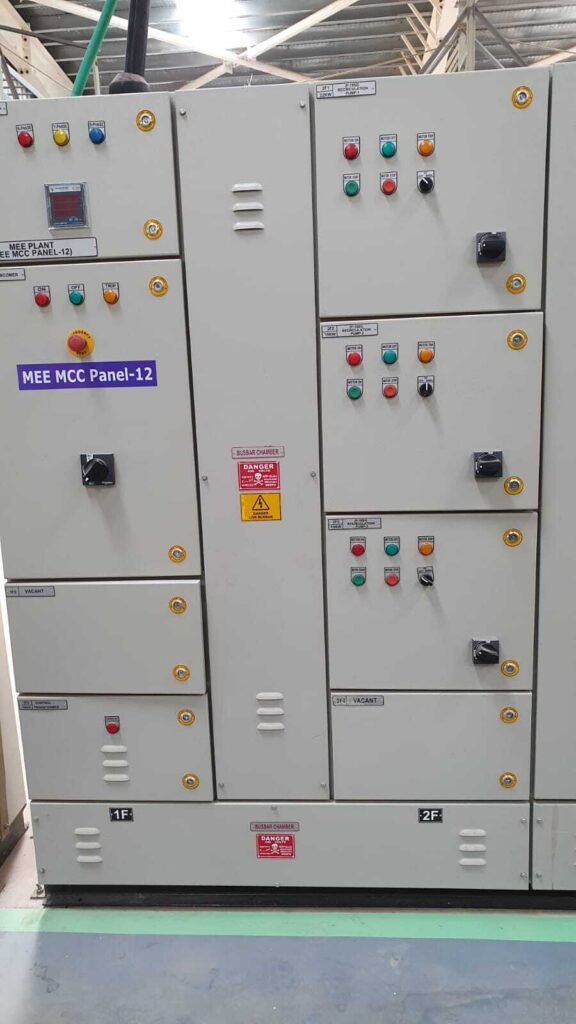
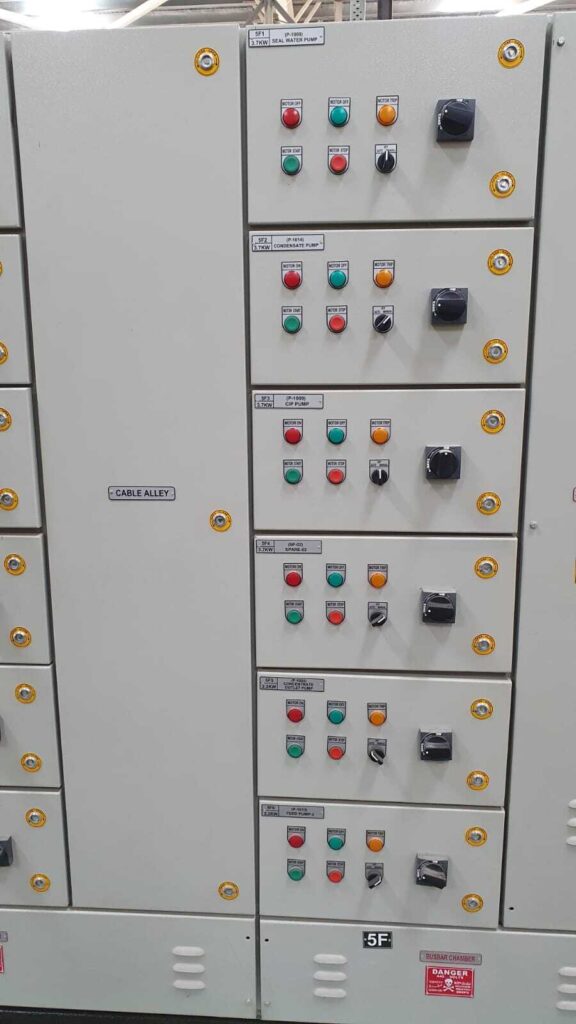
PCC PANNEL
What is a PCC Panel?
A PCC (Power Control Center) panel is a central electrical distribution and control unit that manages the incoming power supply and distributes it to various MCCs, VFDs, and other loads.
It includes circuit breakers, relays, busbars, and monitoring systems to ensure safe and reliable power distribution.
Applications Of PCC Pannel
Industrial Plants & Manufacturing Units
Distributes power to motors, MCCs, machines, and process equipment.
Provides overload, short-circuit, and earth fault protection.
Power Plants & Utilities
Handles high-capacity power distribution.
Integrates with DG (Diesel Generator) sets and transformers.
Cement, Steel & Mining Industries
Supplies power for crushers, conveyors, furnaces, kilns, and heavy machinery.
Ensures continuous power with protection interlocks.
Oil & Gas, Petrochemicals, Refineries
Centralized power control for pumps, compressors, and process units.
Integrated with PLC/DCS for monitoring.
Commercial Buildings & Infrastructure
Distributes power for HVAC, elevators, and lighting systems.
Provides energy metering and load management.
Water Treatment & Utilities
Powers pumps, blowers, and automation systems.
Ensures uninterrupted operation with backup arrangements.

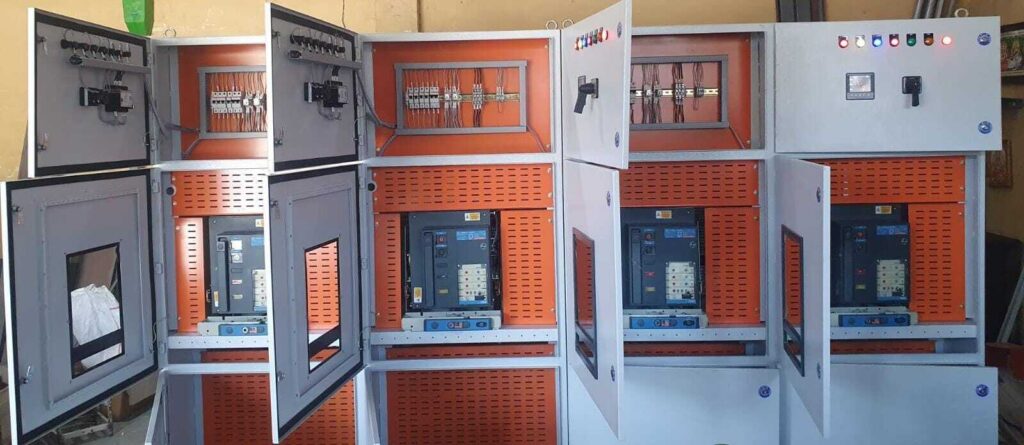
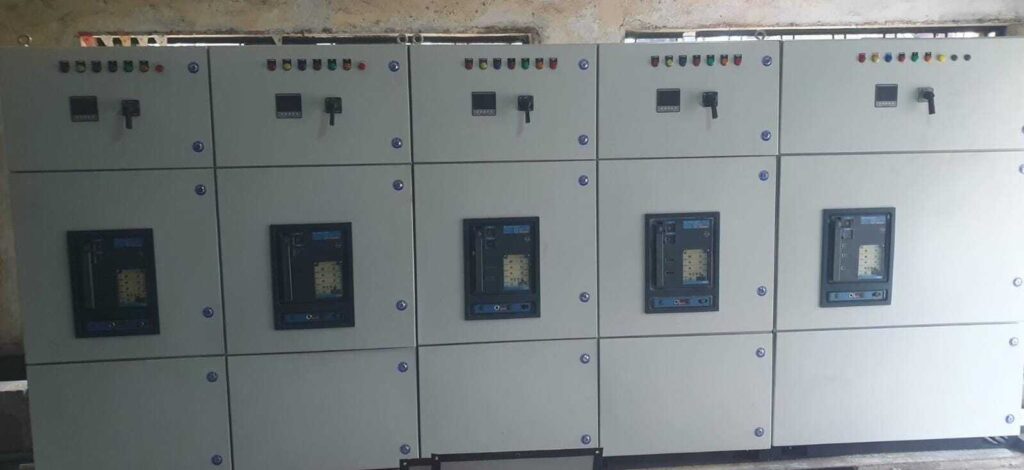
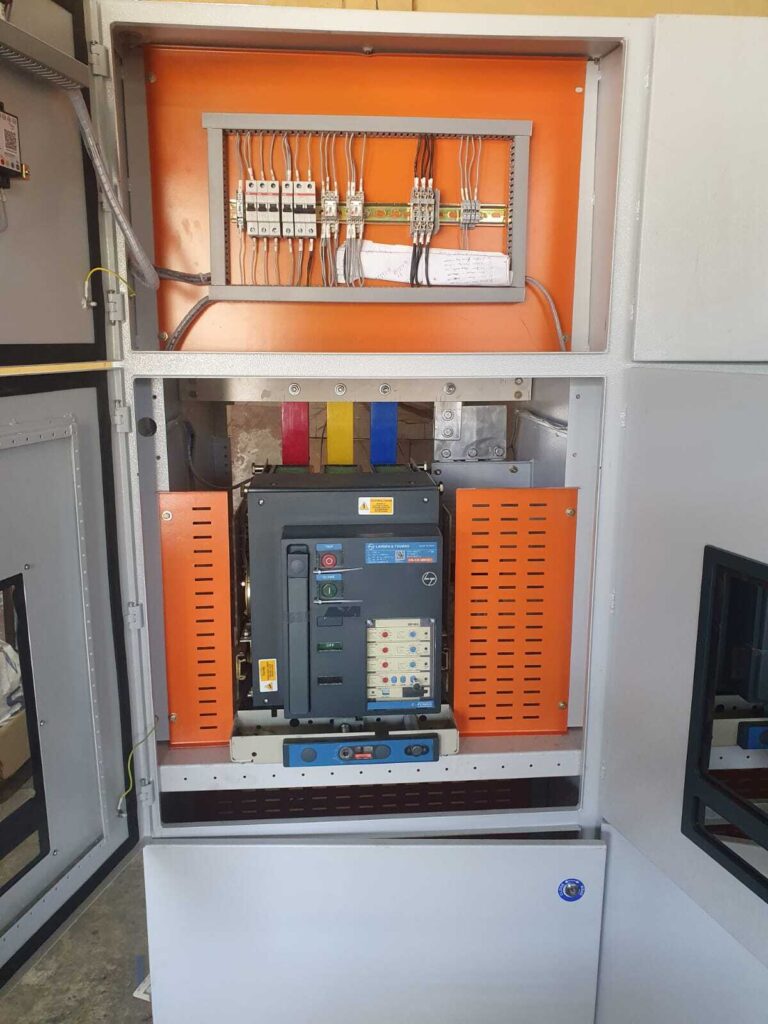

PLC cum VFD SYSTEM
PLC VFD System
PLC cum VFD systems are widely used in industries to achieve intelligent automation, energy efficiency, and reliable motor control. The PLC handles process logic, sequencing, and safety interlocks, while the VFD provides variable speed and torque control for motors. This integration ensures smooth operation, reduced power consumption, and optimized performance in applications like pumps, fans, conveyors, elevators, HVAC systems, water treatment, and manufacturing plants.
Applications
Automated Control: PLC (Programmable Logic Controller) manages process logic, sequencing, and interlocks, while VFD (Variable Frequency Drive) controls motor speed and torque. Together, they provide precise automation.
Energy Saving: VFD adjusts motor speed as per load demand, reducing unnecessary power consumption, especially in pumps, fans, and compressors.
Process Optimization: PLC ensures smooth operation with logic-based decisions, while VFD provides variable speed operation for better efficiency and product quality.
Protection & Safety: System prevents overloading, overheating, and electrical faults by integrating PLC alarms/interlocks with VFD protections.
Flexibility & Scalability: Easy to modify logic in PLC and motor parameters in VFD, making the system adaptable for different applications.
Applications: Widely used in HVAC, water treatment plants, conveyor systems, elevators, cranes, cement, steel, textile, paper, and chemical industries.
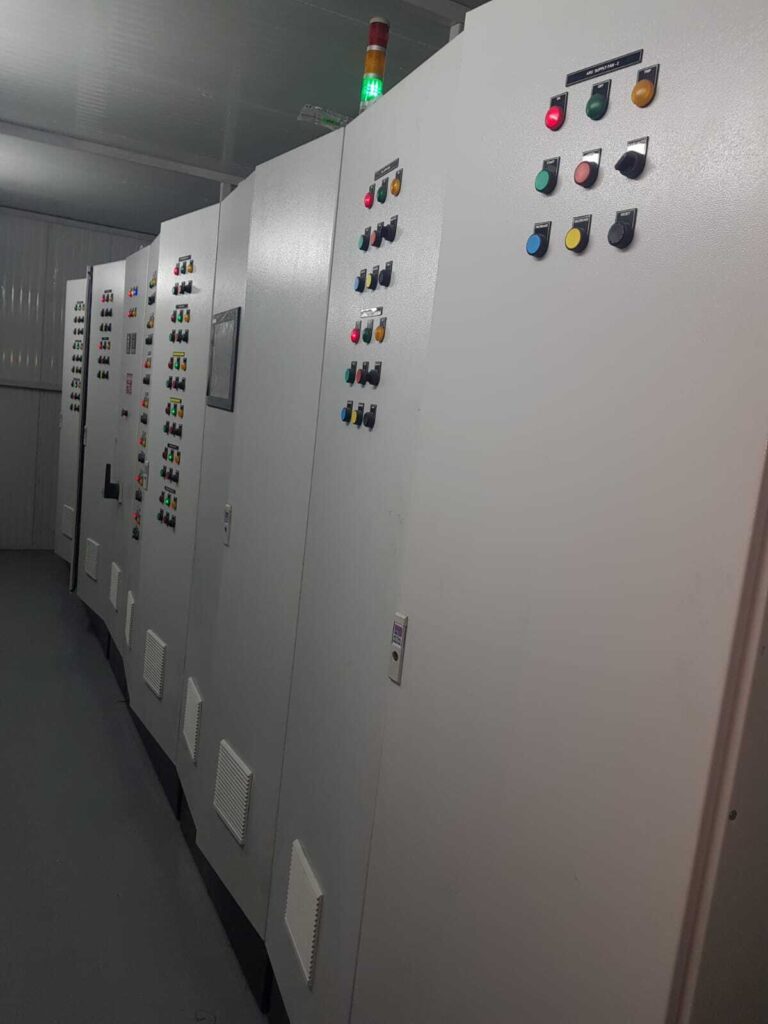
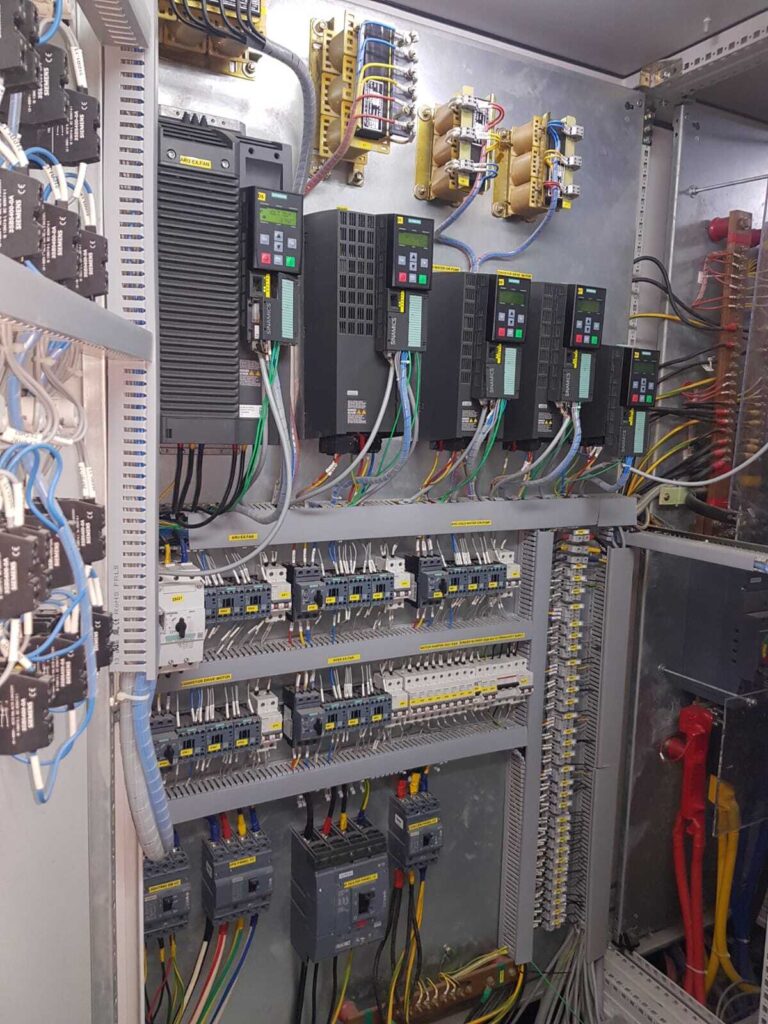
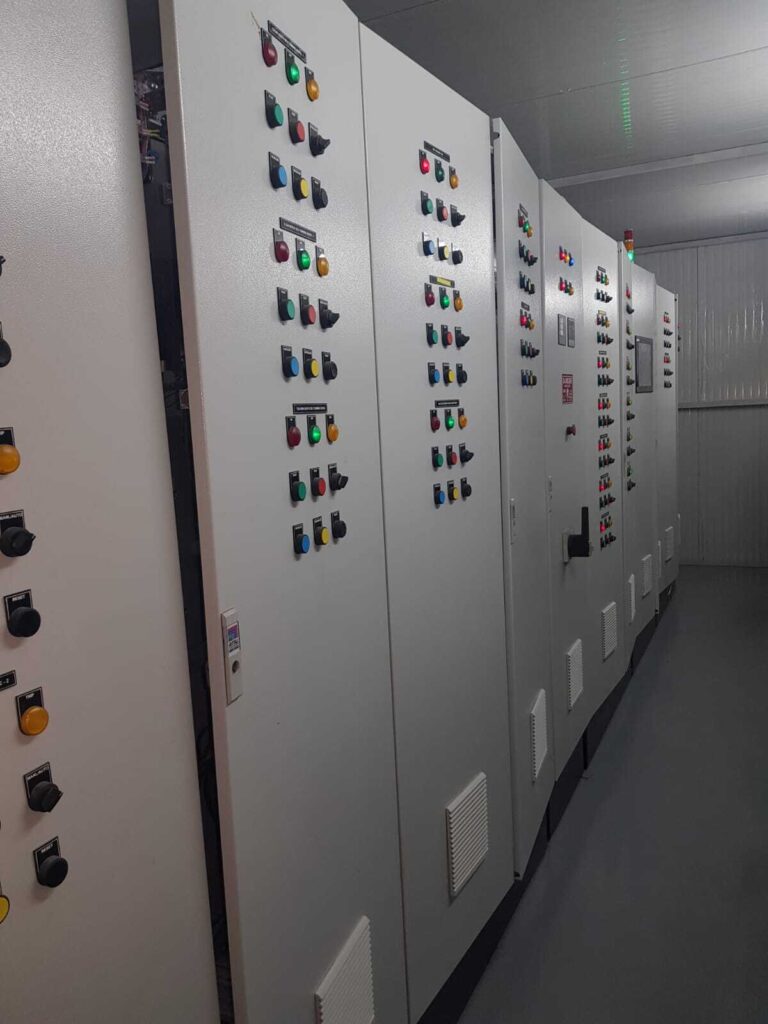
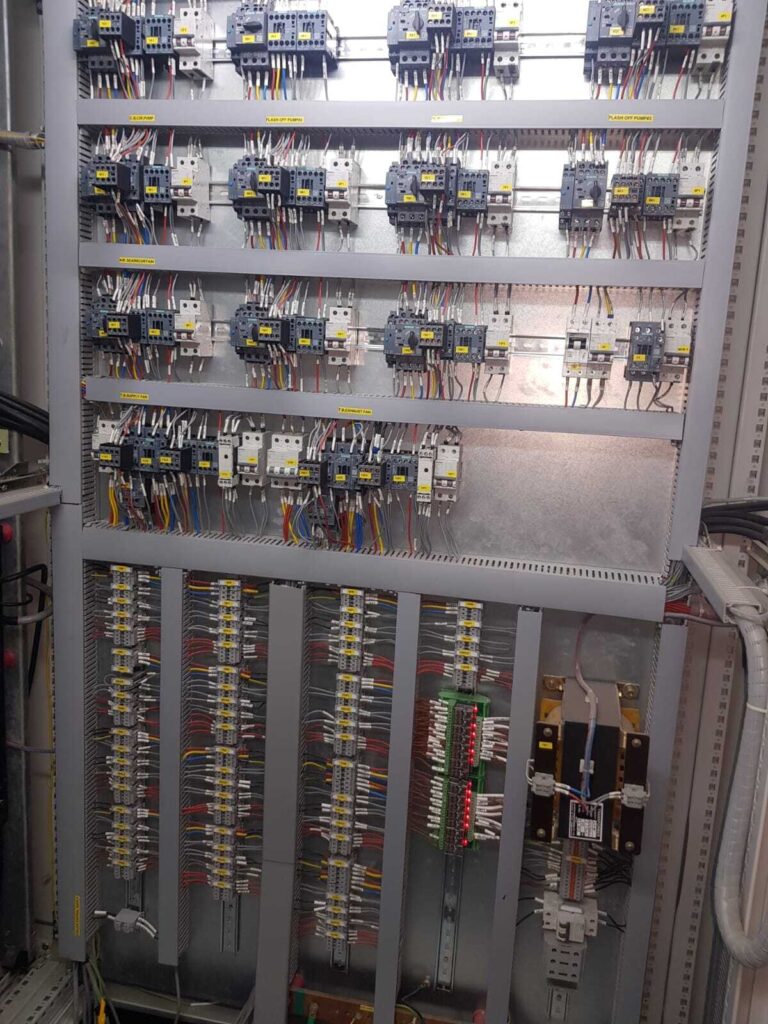
VFD SYSTEM
VFD System
A VFD system is used to control the speed and torque of an electric motor by varying the frequency and voltage of the power supplied. It helps in optimizing energy consumption, improving process control, and extending equipment life.
Applications
HVAC systems (fans, blowers, chillers)
Water and wastewater treatment (pumps)
Conveyors and material handling systems
Cement, steel, textile, and paper industries
Elevators, cranes, and hoists
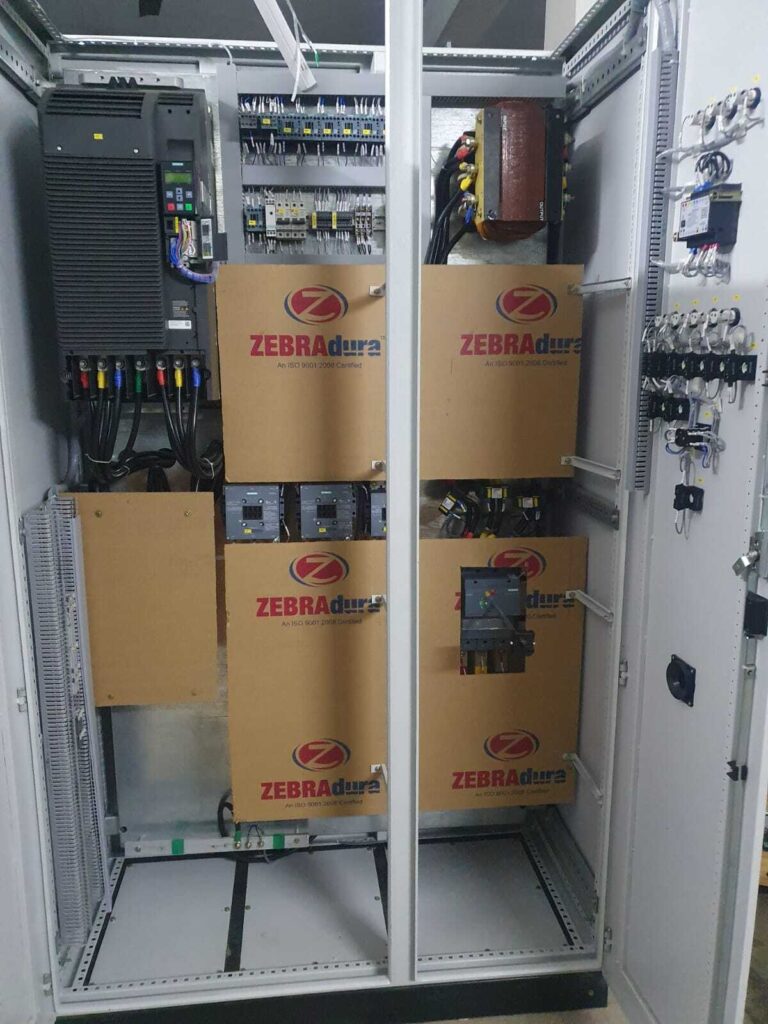
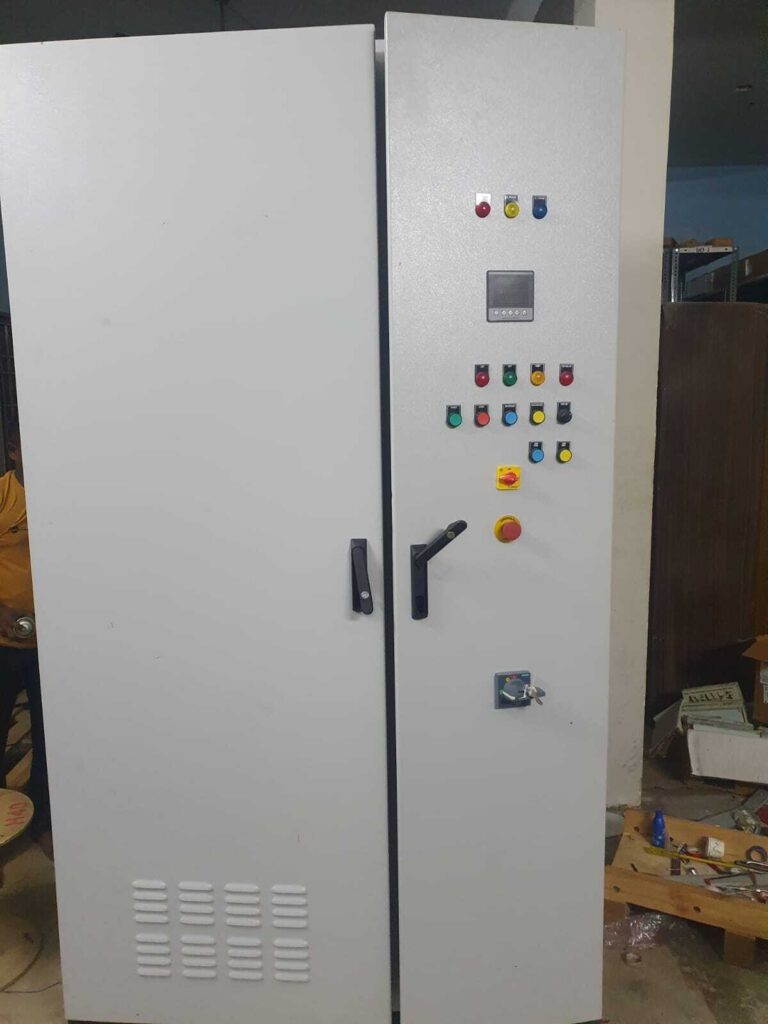

RIO PANNEL
RIO Pannel
An RIO Panel is used in industrial automation to extend the input and output capacity of a PLC (Programmable Logic Controller) system. Instead of wiring all field instruments directly to the main PLC, signals are connected to a Remote I/O panel, which communicates with the PLC through industrial communication protocols (like Profibus, Profinet, Modbus, or Ethernet/IP).
Functions
Reduces Wiring Cost & Complexity: Minimizes long cable runs by placing I/O closer to field devices.
Faster Installation & Maintenance: Simplifies system design and troubleshooting.
Flexibility & Scalability: Easy to add or modify I/O points without changing the main PLC.
Reliable Communication: Ensures accurate signal transmission between field instruments and central PLC/DCS.
Distributed Control: Suitable for large plants spread across multiple locations.
